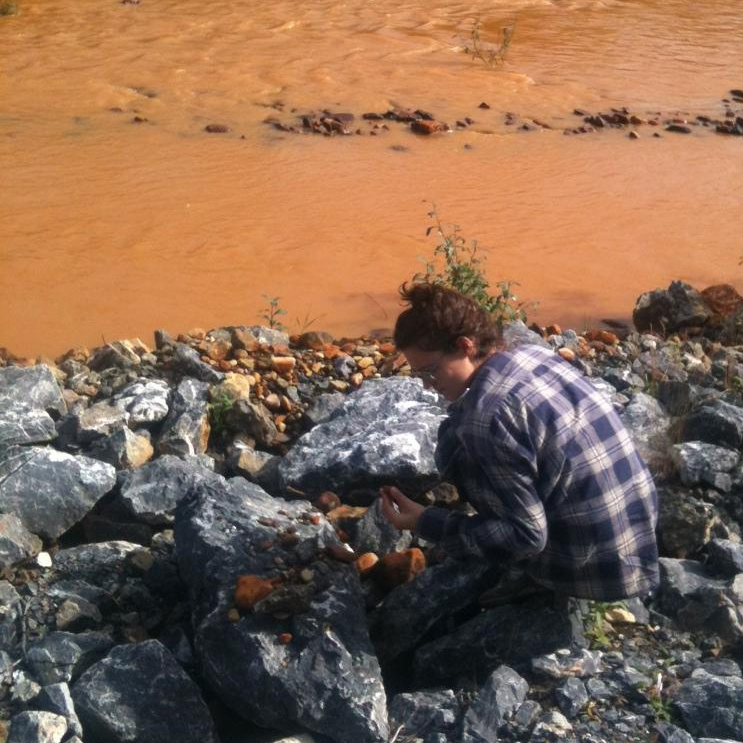Why is that river red?
I’ve lived in the Yukon for three months, in Dawson City, just south of the majestic Tombstone Territorial Park. In all that time, no one ever mentioned the red river that flows 300-or-so kilometres north of here. No one mentioned the red river. The rocks along the riverbed are a bright orange-red, like rust—just like the water. The water is thick. Opaque. Technically, the river isn’t a river at all, but a creek.
It smells a tiny bit sulphuric, but by no means like rotten eggs. It must have smelled worse to the dog than to us, since the dog wouldn’t sip that stuff at all. Good thing. The government of Yukon says don’t drink the water.
Downstream, at its confluence with the Ogilvie River, the water from Red Creek doesn’t immediately mix. The Red Creek’s rusty water remains, a visible streak running side-by-side with the fresh waters of the Ogilvie.
The Yukon runs on mining, so a solid first-guess is to pin the nasty colour on human activity. What was it? Upturned earth? Pilings runoff?
Thankfully, this wonderful water isn’t an accidental human project. The water is orange because in this mountainous range of the North we’re near sulphur springs and heavy shale deposits, and Red Creek, fed from the sulphur springs, has to go through the rock to get to the creek.
Shale, the rock found all over these parts, is made up off superfine metallic clay. As water percolates its way through the ground and into the creek, it picks up those metals and sulphides. As a result, the river itself is metallic. Just like drip coffee.
I do mean that this stuff is like drip coffee. Weirder even than the colour of the water (that no one ever mentioned) is that of the spring water that feeds the creek. It starts out inkjet black. Not until the iron in the water gets oxidized does it turn red. We are literally talking about thick rust water at Red Creek.
With iron making up 3 parts per every million, and sulphur 340, the river is literally packed with metals. That’s not it, though: nickel and zinc join iron for notably high contents, clocking in at roughly 10 times more than most other rivers in the world says geochemist Matt Herod.
The metals that fill the river at such extremes also end up covering the rocks along the bank, which is why my pockets are full of red and black stones. A bit higher up along the riverbed the stones are more pedestrian greys–the high-water mark is clearly delineated in orange.
Plant life still flourishes along the river, with roses in abundance among the trees. They are robust and their rosehips in the late summer are thick and round. Iron, in gardening circles, is considered a magic elixir for roses. Here, they have it.
This post first appeared on the Canadian Science Writers' Association group blog as Why is that river red? | Canadian Science Writers' Association.





